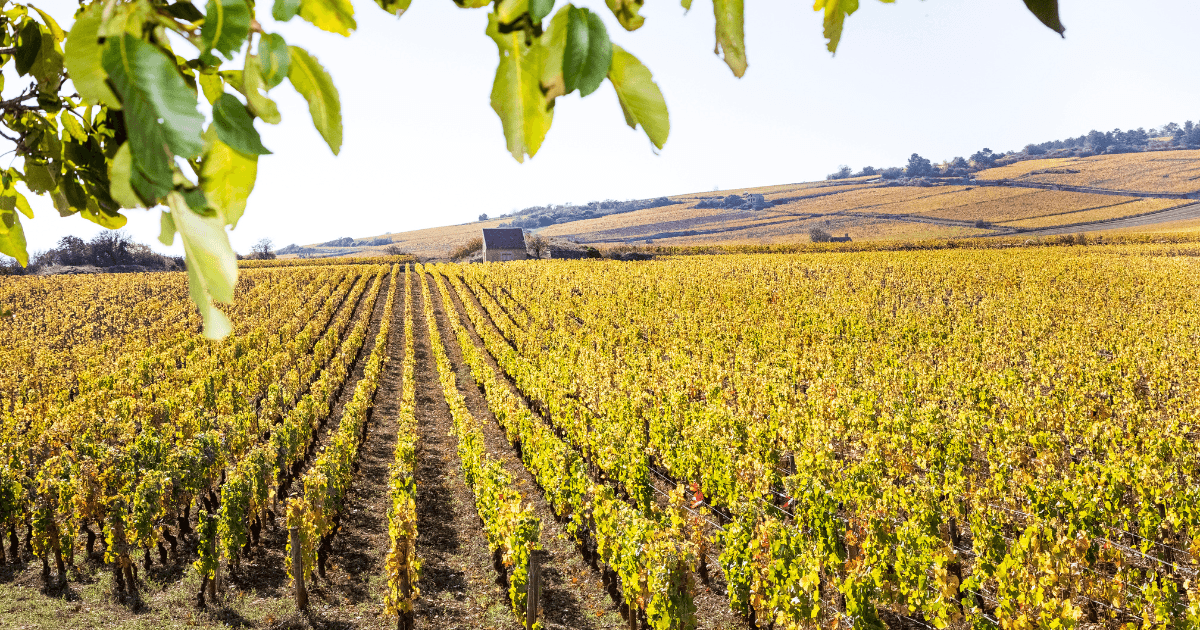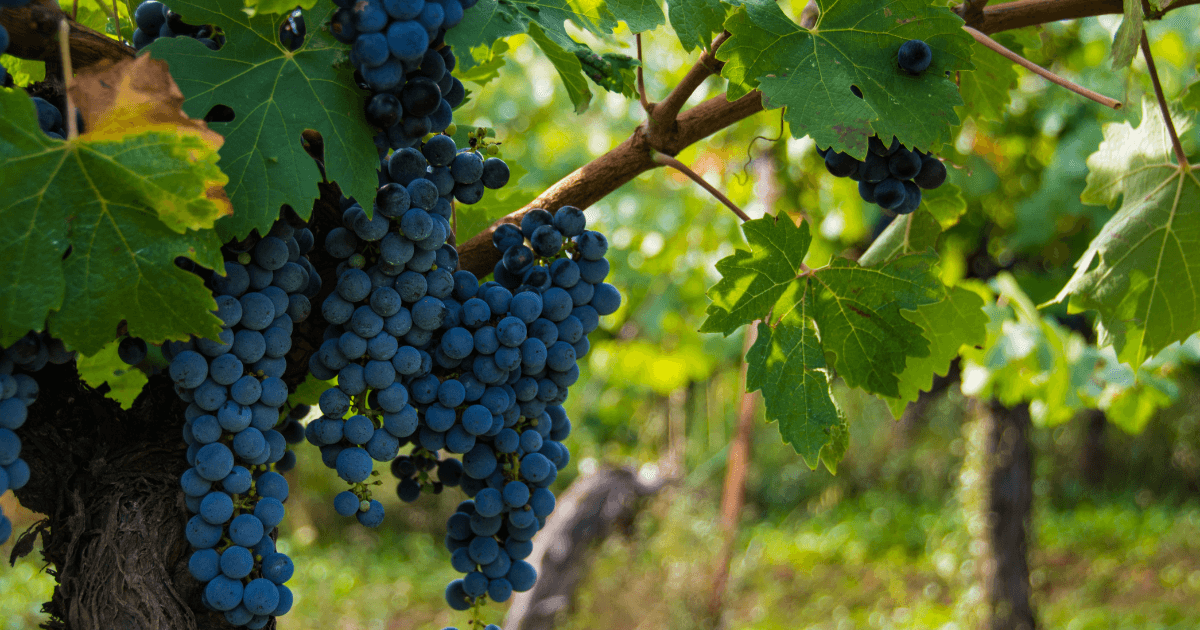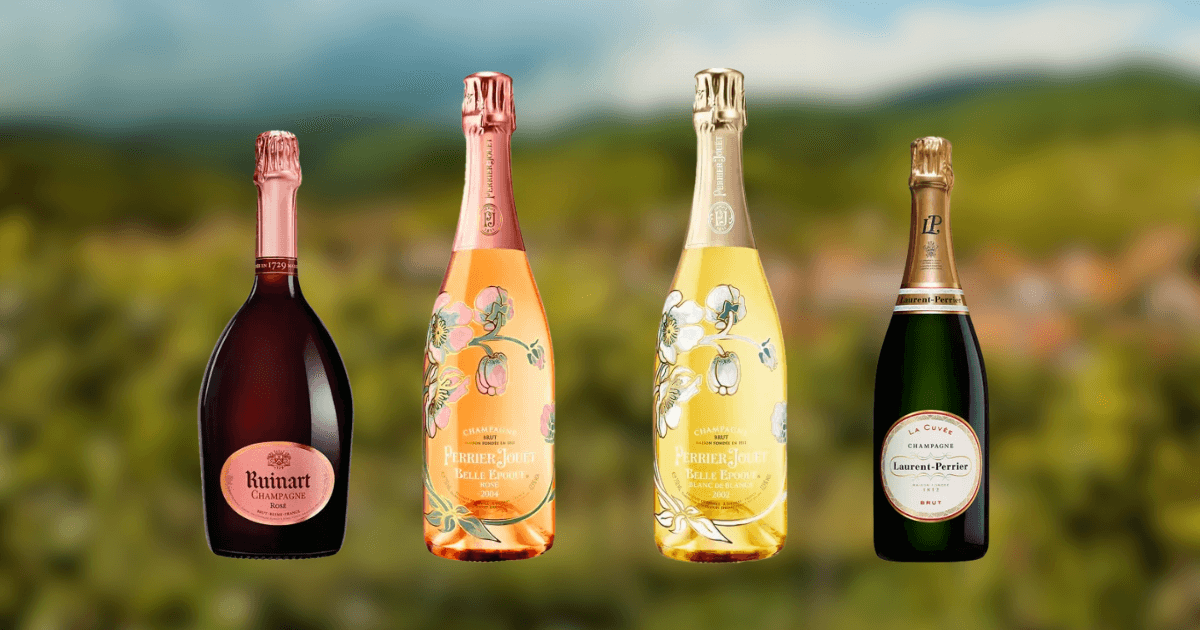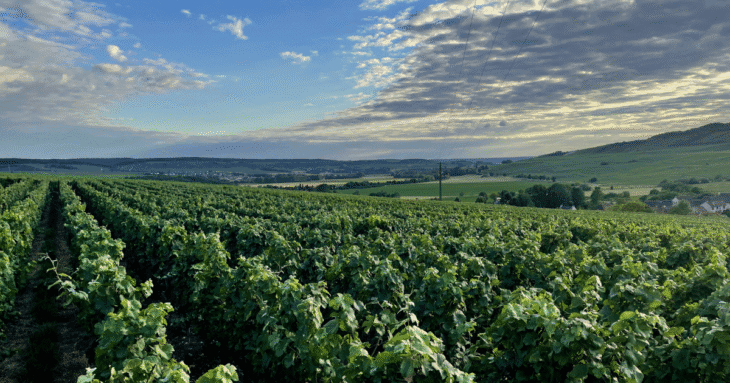The Champagne Region of France: Uncorking Tradition, Terroir, and Timeless Elegance
There is something about Champagne that transcends the glass. It is more than the pop of a cork or the shimmer of bubbles—it is heritage captured in a bottle. What makes Champagne truly extraordinary is not just the finesse of its sparkling wines, but the place from which it comes. Champagne, unlike any other, is a legally protected name under the Appellation d’Origine Contrôlée (AOC), meaning only sparkling wine produced in this specific region of France, following strict traditional methods, can bear the name.
Its prestige didn’t happen overnight. With roots that trace back to the Roman Empire, and a reputation built through royal courts, Champagne has earned its global reverence. From coronations in Reims to contemporary celebrations worldwide, it remains a symbol of joy, sophistication, and cultural ritual.
Key Takeaways:
- Champagne can only come from the Champagne region of France protected under AOC laws and produced using traditional methods that reflect centuries of heritage and precision
- The region is divided into five unique sub-regions Montagne de Reims, Vallée de la Marne, Côte des Blancs, Côte de Sézanne, and Aube each contributing distinct expressions through soil, grape, and microclimate
- Chalky subsoils and a cool climate shape Champagne’s signature acidity and minerality while underground cellars provide ideal aging conditions for complexity and finesse
- Pinot Noir, Chardonnay, and Pinot Meunier are the core grapes of Champagne with blending considered an art form and lesser-known varietals gaining renewed appreciation among small producers
- Visiting the Champagne region reveals the full story behind the bottle from historic towns like Reims and Épernay to hidden gems like Les Riceys and Hautvillers where tradition, terroir, and elegance meet
Where Is Champagne Made? Mapping the Region

Tucked into the northeast of France, just under 100 miles from Paris, lies a landscape unlike any other. The Champagne region stretches across parts of Marne, Aube, Aisne, Haute-Marne, and Seine-et-Marne. With rolling hills, historic towns, and a patchwork of vineyards, this region carries the quiet power of centuries of winemaking.
The climate is cool and semi-continental, with oceanic influences that moderate extremes. Summers are short, winters long and frost-prone. These conditions, though challenging, help preserve the acidity that is so essential for sparkling wine.
Beneath the surface lies Champagne’s geological marvel: chalk. This porous subsoil, interspersed with marl and limestone, provides excellent drainage while retaining moisture, encouraging deep root systems and imparting a distinct mineral tension to the wines. It’s this underground labyrinth of chalk that also houses the region’s famed cellars, where bottles age slowly and gracefully in naturally regulated conditions.
Vital Stats:
- Total area under vine: 34,000 hectares
- Number of producers: Over 16,000 growers; 300 houses
- Annual production: Around 300 million bottles
The Five Sub-Regions of Champagne: A Deep Dive

1. Montagne de Reims
This hilly, forested area between Reims and Épernay is known for its powerful Pinot Noir. Its vineyards perch on chalky slopes, creating wines with structure and aging potential. The Montagne’s mosaic of microclimates and elevations adds complexity to the wines.
- Famous for: Pinot Noir dominance
- Terrain: Forests, slopes, chalky soils
- Key villages: Verzenay, Bouzy, Ambonnay
- Notable producers: Bollinger, Veuve Clicquot, Egly-Ouriet
- Wine profile: Structured, bold, excellent for aging
2. Vallée de la Marne
Flowing alongside the Marne River, this sub-region is home to Pinot Meunier, a varietal that adds fruitiness and approachability to blends. The soils are more clay-heavy and temperatures slightly cooler, suiting this early-ripening grape. It’s the heartland of growers who champion innovation and natural methods.
- Famous for: Pinot Meunier
- Terrain: Clay soils, cooler climate
- Key villages: Aÿ, Mareuil-sur-Aÿ
- Notable producers: Billecart-Salmon, Gaston Chiquet
- Wine profile: Fruity, fresh, early-drinking
3. Côte des Blancs
A pristine ribbon of Chardonnay vineyards, this area is revered for its chalky soils and crystalline, mineral-driven wines. Here, Chardonnay achieves a finesse that’s almost ethereal.
- Famous for: Chardonnay
- Terrain: Pure chalk soils
- Key villages: Le Mesnil-sur-Oger, Avize, Cramant
- Notable producers: Salon, Pierre Gimonnet, Larmandier-Bernier
- Wine profile: Elegant, mineral, age-worthy
4. Côte de Sézanne
Less famous than its northern sibling, the Côte de Sézanne grows mostly Chardonnay in clay-rich soils. Its wines are rounder, softer, and fruitier. The region has been quietly gaining recognition for its generous, food-friendly Champagnes.
- Famous for: Softer style Chardonnay
- Terrain: Clay-rich soils
- Key villages: Sézanne, Barbonne-Fayel
- Notable producers: Michel Gonet, Ulysse Collin
- Wine profile: Creamy, orchard fruit, approachable
5. Aube (Côte des Bar)
Further south, closer to Burgundy, the Aube produces deeply expressive Pinot Noir. The soils here are Kimmeridgian marl, identical to Chablis. This is where tradition meets experimentation, with winemakers pushing boundaries.
- Famous for: Pinot Noir
- Terrain: Kimmeridgian marl
- Key villages: Les Riceys, Bar-sur-Seine
- Notable producers: Drappier, Vouette & Sorbée, Cedric Bouchard
- Wine profile: Rich, ripe, expressive; home to Rosé des Riceys
The Grapes Behind the Bubbles
Champagne’s backbone is its grape trio: Pinot Noir, Chardonnay, and Pinot Meunier. But it’s the interplay between them—and their responses to the terroir—that makes each bottle unique.
- Pinot Noir: Brings structure, depth, and red fruit tones. Grown extensively in the Montagne de Reims and Aube.
- Chardonnay: The soul of finesse. Known for citrus, white flowers, and its mineral purity. Dominant in the Côte des Blancs.
- Pinot Meunier: Often underrated, it adds roundness, fruitiness, and charm. Best suited to the cooler, clay-rich soils of Vallée de la Marne.
There are also four lesser-used grapes permitted by the AOC:
- Arbanne: Light and floral
- Petit Meslier: High in acidity, rare
- Pinot Blanc & Pinot Gris: Add aromatic complexity
These ancestral grapes are enjoying a quiet revival among boutique producers. Single varietals are rising in popularity, yet blending remains the region’s signature art. A winemaker’s ability to harmonize dozens of base wines into a singular cuvée is the true alchemy of Champagne.
From Vine to Bottle: The Champagne Winemaking Process

Making Champagne is a ballet of tradition and precision. The meticulous process is what separates Champagne from all other sparkling wines.
- Harvest: Always done by hand. Machine harvesting is banned.
- Pressing: Only the first 20.5 hectoliters per 4,000 kilograms of grapes are used for Champagne.
- Primary Fermentation: Base wines are vinified separately, often in stainless steel, sometimes in oak.
- Blending (Assemblage): Multiple wines, grape varieties, and vintages are blended.
- Secondary Fermentation: Yeast and sugar (liqueur de tirage) added before bottling. This is the step that creates bubbles.
- Lees Aging: Bottles rest sur lie. This period brings complexity and texture.
- Riddling (Remuage): Bottles are gradually turned to collect yeast in the neck.
- Disgorgement (Dégorgement): The neck is frozen and the sediment expelled.
- Dosage: A final touch of sweetness (or none at all) determines the style.
- Corking: Bottles are corked, wired, and aged further if needed.
Planning Your Champagne Journey: Must-Visit Towns and Routes
There’s no better way to understand Champagne than to walk its villages, feel the chalk underfoot, and taste wines at the source.
Reims
Reims is a city of stately grandeur and layered history, serving as the ceremonial heart of French kings. Gothic cathedrals rise beside centuries-old Champagne houses whose chalk cellars stretch for miles underground. Visitors often feel the energy of celebration mixed with solemn elegance in its historic streets. It’s not just a destination—it’s the gateway to Champagne’s past and present.
- Major Houses: Veuve Clicquot, Taittinger, Pommery
- Cultural tip: Visit Villa Demoiselle for Art Nouveau charm
Épernay
Épernay is synonymous with opulence, with its Avenue de Champagne offering a parade of elegant maisons and mansions. Beneath its quiet surface lies a vast network of cellars storing millions of bottles. This town is where tradition meets luxury, and where the air seems permanently laced with celebration. Whether you’re touring or tasting, Épernay whispers of refinement.
- Must-see: Moët & Chandon’s vast cellars
- Hidden gem: Champagne Collard-Picard’s boutique tasting roo
Hautvillers
Perched on a hillside, Hautvillers is often called the birthplace of Champagne. It was here that Dom Pérignon refined the winemaking methods that would shape history. The village exudes rustic charm, with wrought iron signs adorning centuries-old buildings. Its vineyards offer sweeping views, and its atmosphere invites quiet reflection.
Les Riceys & Troyes
In the south of the region, Les Riceys and Troyes provide a rustic, soulful experience far from the grand boulevards. Les Riceys is the only village in Champagne with three AOCs, including the rare and coveted Rosé des Riceys. Troyes enchants with its medieval architecture, timbered houses, and gastronomic delights. Together, they offer a slower, richer pace to experience Champagne’s lesser-known side.
Champagne Routes
The Route du Champagne is a scenic ribbon weaving through storybook villages and rolling vineyards. Travelers can discover independent growers, family-run cellars, and spontaneous tastings far from the crowds. The roads are dotted with panoramic viewpoints, historical markers, and warm welcomes. This journey isn’t just about wine—it’s about the spirit of the region itself.
Champagne Styles to Know and Try

Understanding Champagne styles can unlock a world of new favorites:
- Non-Vintage (NV): Blended from multiple years, representing house style
- Vintage: From a single exceptional year; complex and age-worthy
- Blanc de Blancs: 100% Chardonnay, elegant and bright
- Blanc de Noirs: Made from Pinot Noir/Meunier, fuller-bodied
- Rosé: Blended (adding red wine) or saignée (bleeding juice from red skins)
- Prestige Cuvées: Dom Pérignon, Cristal, La Grande Dame—wines of legacy
- Dosage Levels:
- Brut Nature: Bone dry (0–3 g/L)
- Extra Brut: Very dry (0–6 g/L)
- Brut: Classic (up to 12 g/L)
- Sec/Demi-Sec: Sweet styles for dessert
Food Pairings by Style
- Blanc de Blancs: Sushi, oysters, tempura
- Blanc de Noirs: Roast chicken, mushroom risotto
- Rosé: Duck, berry desserts, charcuterie
- Vintage: Lobster, foie gras, aged cheeses
Why the Champagne Region Is a Must-Know for Wine Lovers
Champagne is where history, craftsmanship, and celebration converge. Each bottle holds within it centuries of tradition, a story told through terroir and time. The diversity of its sub-regions, grapes, and winemaking styles ensures there is a Champagne for every palate, every occasion.
Exploring the Champagne region firsthand is a transformative experience. You leave not only with newfound knowledge, but with a deeper reverence for the land and the people who bring this liquid joy to life.
At California Champagne Sabers, we honor this heritage. We believe Champagne is more than a drink—it’s an experience worth celebrating in style. Whether you’re opening a bottle on your wedding day or simply because it’s Tuesday, we’re here for that beautiful, dramatic flourish.
May your celebrations always sparkle.
